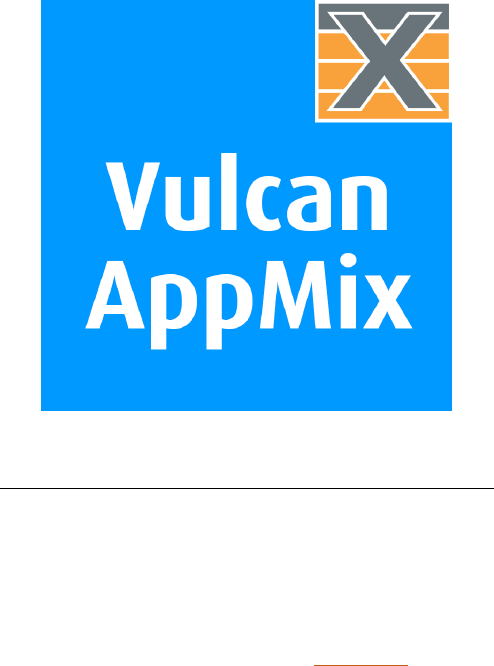2
Protocols
AFS
BitTorrent
DNS
Echo
FIX
FTP (active)
FTP (passive)
HTTP
HTTPS
IMAP
(encrypted)
IMAPS
LDAP
LLMNR
MDNS
MQTT over TCP
MSExchange
MAPI
NBNS
NFS
POP3
(unencrypted)
POP3 over TLS
QUIC
RADIUS
RDP
RTP/RTCP
RTSP
Secure MQTT
SIP
SMB2
SMTP
SMTP over TLS
SRTP
SSDP
SSHv2
TELNET (per-
character)
TELNET (per-line)
TFTP Read
Request
TFTP Write
Request
Applications
Amazon
App Store App
Apple Map
AWS S3
Bing
BitTorrent
(Small)
Bloomberg
Chrome
Chrome
Incognito
CNN
DNS
Dropbox
eBay
Email
application
Facebook
Finance orders
Firefox
Flickr
Gmail
Google App
Google Calendar
Google Hangouts
App
Google Search
Google Drive
Google Maps
Hotmail Web
Instagram
iOS Calendar
IoT Temperature
publish
IoT Temperature
publish over TLS
iTunes App
LINE App
LinkedIn
Mobile Bank
Oracle MySQL
Oracle MySQL
Oracle MySQL
over TLS
Outlook Web
Mail
Paypal
QQ App
Reddit
Remote Desktop
RSS
SIP VoIP
Skype
Slack App
Tumblr
Twitter
Video stream
1080p over HTTP
Video stream
1080p over RTP
WeChat App
Weibo
Wikipedia
Search
Yahoo
Yahoo Mail Web
YouTube

3
Protocols
AFS
The Andrew File System (AFS) is a distributed file system which uses a set of trusted servers
to present a homogeneous, location-transparent file name space to all the client
workstations.
BitTorrent
BitTorrent is a communications protocol of peer-to-peer file sharing ("P2P") which is used to
distribute data and electronic files over the Internet. BitTorrent is one of the most common
protocols for transferring large files, such as digital audio files containing TV shows or video
clips or digital audio files containing songs. Peer-to-peer networks have been estimated to
collectively account for approximately 43% to 70% of all Internet traffic (depending on
location) as of February 2009. In November 2004, BitTorrent was responsible for 25% of all
Internet traffic. As of February 2013, BitTorrent was responsible for 3.35% of all worldwide
bandwidth, more than half of the 6% of total bandwidth dedicated to file sharing.
DNS
The Domain Name System (DNS) is a hierarchical decentralized naming system for computers,
services, or any resource connected to the Internet or a private network. It associates various
information with domain names assigned to each of the participating entities. Most
prominently, it translates more readily memorized domain names to the numerical IP
addresses needed for the purpose of locating and identifying computer services and devices
with the underlying network protocols. By providing a worldwide, distributed directory
service, the Domain Name System is an essential component of the functionality of the
Internet.
Echo
The Echo Protocol is a service in the Internet Protocol Suite defined in RFC 862. A host may
connect to a server that supports the Echo Protocol using the Transmission Control Protocol
(TCP) or the User Datagram Protocol (UDP) on the well-known port number 7. The server
sends back an identical copy of the data it received.
FIX4.0
The Financial Information eXchange (FIX) protocol is an electronic communications protocol
initiated in 1992 for international real-time exchange of information related to the securities
transactions and markets. Managing the delivery of trading applications and keeping latency
low increasingly requires an understanding of the FIX protocol.
FIX4.1
The Financial Information eXchange (FIX) protocol is an electronic communications protocol
initiated in 1992 for international real-time exchange of information related to the securities
transactions and markets. Managing the delivery of trading applications and keeping latency
low increasingly requires an understanding of the FIX protocol.

4
FIX4.2
The Financial Information eXchange (FIX) protocol is an electronic communications protocol
initiated in 1992 for international real-time exchange of information related to the securities
transactions and markets. Managing the delivery of trading applications and keeping latency
low increasingly requires an understanding of the FIX protocol.
FIX4.3
The Financial Information eXchange (FIX) protocol is an electronic communications protocol
initiated in 1992 for international real-time exchange of information related to the securities
transactions and markets. Managing the delivery of trading applications and keeping latency
low increasingly requires an understanding of the FIX protocol.
FIX4.4
The Financial Information eXchange (FIX) protocol is an electronic communications protocol
initiated in 1992 for international real-time exchange of information related to the securities
transactions and markets. Managing the delivery of trading applications and keeping latency
low increasingly requires an understanding of the FIX protocol.
FIX5.0
The Financial Information eXchange (FIX) protocol is an electronic communications protocol
initiated in 1992 for international real-time exchange of information related to the securities
transactions and markets. Managing the delivery of trading applications and keeping latency
low increasingly requires an understanding of the FIX protocol.
FIXT1.1
The Financial Information eXchange (FIX) protocol is an electronic communications protocol
initiated in 1992 for international real-time exchange of information related to the securities
transactions and markets. Managing the delivery of trading applications and keeping latency
low increasingly requires an understanding of the FIX protocol.
FTP (active)
The File Transfer Protocol (FTP) is a standard network protocol used to transfer computer files
between a client and server on a computer network. FTP is built on a client-server model
architecture and uses separate control and data connections between the client and the
server. FTP users may authenticate themselves with a clear-text sign-in protocol, normally in
the form of a username and password, but can connect anonymously if the server is
configured to allow it.
FTP (passive)
The File Transfer Protocol (FTP) is a standard network protocol used to transfer computer files
between a client and server on a computer network. FTP is built on a client-server model
architecture and uses separate control and data connections between the client and the
server. FTP users may authenticate themselves with a clear-text sign-in protocol, normally in
the form of a username and password, but can connect anonymously if the server is
configured to allow it.

5
HTTP
The Hypertext Transfer Protocol (HTTP) is an application protocol for distributed, collaborative,
hypermedia information systems. HTTP is the foundation of data communication for the World
Wide Web. HTTP functions as a request–response protocol in the client–server computing
model. A web browser, for example, may be the client and an application running on a
computer hosting a web site may be the server. The client submits an HTTP request message
to the server. The server, which provides resources such as HTML files and other content, or
performs other functions on behalf of the client, returns a response message to the client. The
response contains completion status information about the request and may also contain
requested content in its message body. An HTTP client initiates a request by establishing a
Transmission Control Protocol (TCP) connection to a particular port on a server (typically port
80, occasionally port 8080). An HTTP server listening on that port waits for a client's request
message. Upon receiving the request, the server sends back a status line, such as "HTTP/1.1
200 OK", and a message of its own. The body of this message is typically the requested
resource, although an error message or other information may also be returned.
HTTPS
The Hypertext Transfer Protocol (HTTP) is an application protocol for distributed, collaborative,
hypermedia information systems. HTTP is the foundation of data communication for the World
Wide Web. HTTP functions as a request–response protocol in the client–server computing
model. A web browser, for example, may be the client and an application running on a
computer hosting a web site may be the server. The client submits an HTTP request message
to the server. The server, which provides resources such as HTML files and other content, or
performs other functions on behalf of the client, returns a response message to the client. The
response contains completion status information about the request and may also contain
requested content in its message body. An HTTP client initiates a request by establishing a
Transmission Control Protocol (TCP) connection to a particular port on a server (typically port
80, occasionally port 8080). An HTTP server listening on that port waits for a client's request
message. Upon receiving the request, the server sends back a status line, such as "HTTP/1.1
200 OK", and a message of its own. The body of this message is typically the requested
resource, although an error message or other information may also be returned.
IMAP (encrypted)
The Internet Message Access Protocol (IMAP) is an Internet standard protocol used by e-mail
clients to retrieve e-mail messages from a mail server over a TCP/IP connection. IMAP is
defined by RFC 3501. IMAP was designed with the goal of permitting complete management
of an email box by multiple email clients, therefore clients generally leave messages on the
server until the user explicitly deletes them. An IMAP server typically listens on port number
143. IMAP over SSL (IMAPS) is assigned the port number 993. Virtually all modern e-mail
clients and servers support IMAP. IMAP and the earlier POP3 (Post Office Protocol) are the two
most prevalent standard protocols for email retrieval, with many webmail service providers
such as Gmail, Outlook.com and Yahoo! Mail also providing support for either IMAP or POP3.
IMAPS
The Internet Message Access Protocol (IMAP) is an Internet standard protocol used by e-mail
clients to retrieve e-mail messages from a mail server over a TCP/IP connection. IMAP is
defined by RFC 3501. IMAP was designed with the goal of permitting complete management
of an email box by multiple email clients, therefore clients generally leave messages on the
server until the user explicitly deletes them. An IMAP server typically listens on port number
143. IMAP over SSL (IMAPS) is assigned the port number 993. Virtually all modern e-mail
clients and servers support IMAP. IMAP and the earlier POP3 (Post Office Protocol) are the two
most prevalent standard protocols for email retrieval, with many webmail service providers
such as Gmail, Outlook.com and Yahoo! Mail also providing support for either IMAP or POP3.
LDAP (search filter
with AND filter)
The Lightweight Directory Access Protocol is an
open, vendor-neutral, industry standard application protocol for accessing and maintaining
distributed directory information services over an Internet Protocol (IP) network. Directory
services play an important role in developing intranet and Internet applications by allowing
the sharing of information about users, systems, networks, services, and applications
throughout the network. As examples, directory services may provide any organized set of
records, often with a hierarchical structure, such as a corporate email directory. Similarly, a
telephone directory is a list of subscribers with an address and a phone number.

6
LDAP PDU with
DIRSYNC CONTROLS
The Lightweight Directory Access Protocol is an open, vendor-neutral, industry standard
application protocol for accessing and maintaining distributed directory information services
over an Internet Protocol (IP) network. Directory services play an important role in developing
intranet and Internet applications by allowing the sharing of information about users,
systems, networks, services, and applications throughout the network. As examples, directory
services may provide any organized set of records, often with a hierarchical structure, such as
a corporate email directory. Similarly, a telephone directory is a list of subscribers with an
address and a phone number.
LDAP (search filter
with a simple
extensible match)
The Lightweight Directory Access Protocol is an open, vendor-neutral, industry standard
application protocol for accessing and maintaining distributed directory information services
over an Internet Protocol (IP) network. Directory services play an important role in developing
intranet and Internet applications by allowing the sharing of information about users,
systems, networks, services, and applications throughout the network. As examples, directory
services may provide any organized set of records, often with a hierarchical structure, such as
a corporate email directory. Similarly, a telephone directory is a list of subscribers with an
address and a phone number.
LLMNR
The Link-Local Multicast Name Resolution (LLMNR) is a protocol based on the Domain Name
System (DNS) packet format that allows both IPv4 and IPv6 hosts to perform name resolution
for hosts on the same local link. It is included in Windows Vista, Windows Server 2008,
Windows 7, Windows 8 and Windows 10. It is also implemented by systemd-resolved on
Linux. LLMNR is defined in RFC 4795.
MDNS
In computer networking, the multicast Domain Name System (mDNS) resolves host names to
IP addresses within small networks that do not include a local name server. It is a zero-
configuration service, using essentially the same programming interfaces, packet formats and
operating semantics as the unicast Domain Name System (DNS). Although Stuart Cheshire
designed mDNS to be stand-alone capable, it can work in concert with unicast DNS servers.
MQTT over TCP
MQTT (formerly MQ Telemetry Transport) is an ISO standard (ISO/IEC PRF 20922) publish-
subscribe-based "lightweight" messaging protocol for use on top of the TCP/IP protocol. It is
designed for connections with remote locations where a "small code footprint" is required or
the network bandwidth is limited. The publish-subscribe messaging pattern requires a
message broker. The broker is responsible for distributing messages to interested clients
based on the topic of a message.
MSExchange MAPI
Messaging Application Programming Interface (MAPI) is a messaging architecture and a
Component Object Model based API for Microsoft Windows. MAPI allows client programs to
become (e-mail) messaging-enabled, -aware, or -based by calling MAPI subsystem routines
that interface with certain messaging servers. While MAPI is designed to be independent of
the protocol, it is usually used with MAPI/RPC, the proprietary protocol that Microsoft Outlook
uses to communicate with Microsoft Exchange.
NBNS
This service is often called WINS on Windows systems. The NetBIOS Name Service is part of
the NetBIOS-over-TCP protocol suite. NBNS serves much the same purpose as DNS does:
translate human-readable names to IP addresses. As NetBIOS can run on top of several
different network protocols (e.g. IP, IPX, ...), other implementations of the NetBIOS services
have their own mechanisms for translating NetBIOS names to addresses.) NBNS's services are
more limited, in that NetBIOS names exist in a flat name space, rather than DNS's hierarchical
one (multiple flat name spaces can exist, by using NetBIOS scopes, but those are rarely used),
and NBNS can only supply IPv4 addresses; NBNS doesn't support IPv6.

7
NFSv3
Network File System (NFS) is a distributed file system protocol allowing a user on a client
computer to access files over a computer network much like local storage is accessed. NFS,
like many other protocols, builds on the Open Network Computing Remote Procedure Call
(ONC RPC) system. The NFS is an open standard defined in Request for Comments (RFC),
allowing anyone to implement the protocol.
NFSv2
Network File System (NFS) is a distributed file system protocol allowing a user on a client
computer to access files over a computer network much like local storage is accessed. NFS,
like many other protocols, builds on the Open Network Computing Remote Procedure Call
(ONC RPC) system. The NFS is an open standard defined in Request for Comments (RFC),
allowing anyone to implement the protocol.
POP3 (unencrypted)
The Post Office Protocol (POP) is an application-layer Internet standard protocol used by local
e-mail clients to retrieve e-mail from a remote server over a TCP/IP connection. POP has been
developed through several versions, with version 3 (POP3) being the last standard in common
use before largely being made obsolete by the more advanced IMAP. In POP3, e-mails are
downloaded from the server's inbox to your computer. E-mails are available when you are not
connected.
POP3 over TLS
The Post Office Protocol (POP) is an application-layer Internet standard protocol used by local
e-mail clients to retrieve e-mail from a remote server over a TCP/IP connection. POP has been
developed through several versions, with version 3 (POP3) being the last standard in common
use before largely being made obsolete by the more advanced IMAP. In POP3, e-mails are
downloaded from the server's inbox to your computer. E-mails are available when you are not
connected.
QUIC
QUIC (Quick UDP Internet Connections, pronounced quick) is an experimental transport layer
network protocol designed at Google, initially implemented in 2012, and announced as
experimentation broadened in 2013. QUIC supports a set of multiplexed connections between
two endpoints over User Datagram Protocol (UDP), and was designed to provide security
protection equivalent to TLS/SSL, along with reduced connection and transport latency, and
bandwidth estimation in each direction to avoid congestion. QUIC's main goal is to improve
perceived performance of connection-oriented web applications that are currently using TCP.
It also provides a venue for rapid iteration of congestion avoidance algorithms, placing control
into application space at both endpoints, rather than (the relatively slow to evolve) kernel
space.
RADIUS
Emulates the RADIUS Access [RFC 2865] protocol.
RDP
Remote Desktop Protocol (RDP) is a proprietary protocol developed by Microsoft, which
provides a user with a graphical interface to connect to another computer over a network
connection. The user employs RDP client software for this purpose, while the other computer
must run RDP server software. TPKT: Typically, RDP uses TPKT as its transport protocol. TPKT
runs atop TCP; when used to transport RDP, the well known TCP port is 3389, rather than the
normal TPKT port 102.

8
RTP/RTCP
The Real-time Transport Protocol (RTP) is a network protocol for delivering audio and video
over IP networks. RTP is used extensively in communication and entertainment systems that
involve streaming media, such as telephony, video teleconference applications, television
services and web-based push-to-talk features. RTP typically runs over User Datagram Protocol
(UDP). RTP is used in conjunction with the RTP Control Protocol (RTCP). While RTP carries the
media streams (e.g., audio and video), RTCP is used to monitor transmission statistics and
quality of service (QoS) and aids synchronization of multiple streams. RTP is one of the
technical foundations of Voice over IP and in this context is often used in conjunction with a
signaling protocol such as the Session Initiation Protocol (SIP) which establishes connections
across the network.
RTSP
The Real Time Streaming Protocol (RTSP) is a network control protocol designed for use in
entertainment and communications systems to control streaming media servers. The protocol
is used for establishing and controlling media sessions between end points. Clients of media
servers issue VCR-style commands, such as play, record and pause, to facilitate real-time
control of the media streaming from the server to a client (Video On Demand) or from a client
to the server (Voice Recording).
Secure MQTT
MQTT (formerly MQ Telemetry Transport) is an ISO standard (ISO/IEC PRF 20922) publish-
subscribe-based "lightweight" messaging protocol for use on top of the TCP/IP protocol. It is
designed for connections with remote locations where a "small code footprint" is required or
the network bandwidth is limited. The publish-subscribe messaging pattern requires a
message broker. The broker is responsible for distributing messages to interested clients
based on the topic of a message.
SIP
The Session Initiation Protocol (SIP) is a communications protocol for signaling and controlling
multimedia communication sessions. The most common applications of SIP are in Internet
telephony for voice and video calls, as well as instant messaging, over IP networks. SIP works
in conjunction with several other application layer protocols that identify and carry the session
media. Media identification and negotiation is achieved with the Session Description Protocol
(SDP). For the transmission of media streams (voice, video) SIP typically employs the Real-
time Transport Protocol (RTP) or Secure Real-time Transport Protocol (SRTP). For secure
transmissions of SIP messages, the protocol may be encrypted with Transport Layer Security
(TLS).
SMB2
In computer networking, Server Message Block (SMB), one version of which was also known
as Common Internet File System (CIFS), operates as an application-layer network protocol
mainly used for providing shared access to files, printers, and serial ports and miscellaneous
communications between nodes on a network. It also provides an authenticated inter-process
communication mechanism.
SMTP
Simple Mail Transfer Protocol (SMTP) is an Internet standard for electronic mail (email)
transmission. First defined by RFC 821 in 1982, it was last updated in 2008 with the Extended
SMTP additions by RFC 5321—which is the protocol in widespread use today. SMTP by default
uses TCP port 25. The protocol for mail submission is the same, but uses port 587. SMTP
connections secured by SSL, known as SMTPS, default to port 465 (nonstandard, but
sometimes used for legacy reasons).
SMTP over TLS
Simple Mail Transfer Protocol (SMTP) is an Internet standard for electronic mail (email)
transmission. First defined by RFC 821 in 1982, it was last updated in 2008 with the Extended
SMTP additions by RFC 5321—which is the protocol in widespread use today. SMTP by default
uses TCP port 25. The protocol for mail submission is the same, but uses port 587. SMTP
connections secured by SSL, known as SMTPS, default to port 465 (nonstandard, but
sometimes used for legacy reasons).

9
SRTP
The Secure Real-time Transport Protocol (or SRTP) defines a profile of RTP (Real-time Transport
Protocol), intended to provide encryption, message authentication and integrity, and replay
protection to the RTP data in both unicast and multicast applications.
SSDP
The Simple Service Discovery Protocol (SSDP) is a network protocol based on the Internet
Protocol Suite for advertisement and discovery of network services and presence information.
It accomplishes this without assistance of server-based configuration mechanisms, such as the
Dynamic Host Configuration Protocol (DHCP) or the Domain Name System (DNS), and without
special static configuration of a network host. SSDP is the basis of the discovery protocol of
Universal Plug and Play (UPnP) and is intended for use in residential or small office
environments.
SSHv2
Secure Shell (SSH) is a cryptographic network protocol for operating network services securely
over an unsecured network. The best known example application is for remote login to
computer systems by users.
TELNET (per-
character)
Telnet is an application layer protocol used on the Internet or local area networks to provide a
bidirectional interactive text-oriented communication facility using a virtual terminal
connection. User data is interspersed in-band with Telnet control information in an 8-bit byte
oriented data connection over the Transmission Control Protocol (TCP). Telnet is a client-server
protocol, based on a reliable connection-oriented transport. Typically, this protocol is used to
establish a connection to Transmission Control Protocol (TCP) port number 23, where a Telnet
server application (telnetd) is listening.
TELNET (per-line)
Telnet is an application layer protocol used on the Internet or local area networks to provide a
bidirectional interactive text-oriented communication facility using a virtual terminal
connection. User data is interspersed in-band with Telnet control information in an 8-bit byte
oriented data connection over the Transmission Control Protocol (TCP). Telnet is a client-server
protocol, based on a reliable connection-oriented transport. Typically, this protocol is used to
establish a connection to Transmission Control Protocol (TCP) port number 23, where a Telnet
server application (telnetd) is listening.
TFTP Read Request
Trivial File Transfer Protocol (TFTP) is a simple lockstep File Transfer Protocol which allows a
client to get a file from or put a file onto a remote host. One of its primary uses is in the early
stages of nodes booting from a local area network. TFTP has been used for this application
because it is very simple to implement.
TFTP Write Request
Trivial File Transfer Protocol (TFTP) is a simple lockstep File Transfer Protocol which allows a
client to get a file from or put a file onto a remote host. One of its primary uses is in the early
stages of nodes booting from a local area network. TFTP has been used for this application
because it is very simple to implement.

10
Applications
Amazon Sep16
Emulates the use of the Amazon website as of September 2016. This application uses
dynamically created flows to simulate the various internal actions performed by a
web browser. Due to these dynamic flows may be large in number and may contain
a large amount of generated data, scenarios creation and test initialization may
require a considerable amount of time.
App Store App Nov16
Emulates the use of the App Store app as of November 2016. This application uses
dynamically created flows to simulate the various internal actions performed by a
web browser. Due to these dynamic flows may be large in number and may contain
a large amount of generated data, scenarios creation and test initialization may
require a considerable amount of time.
Apple Map Nov 16
Emulates the use of the Apple iOS Map app as of November 2016. This application
uses dynamically created flows to simulate the various internal actions performed by
a web browser. Due to these dynamic flows may be large in number and may
contain a large amount of generated data, scenarios creation and test initialization
may require a considerable amount of time.
AWS S3 Jan 17
Emulates the use of the AWS S3 as of January 2017 for downloading. This application
uses dynamically created flows to simulate the various internal actions performed by
a web browser. Due to these dynamic flows may be large in number and may
contain a large amount of generated data, scenarios creation and test initialization
may require a considerable amount of time.
Bing Search Nov16
Emulates the use of the Bing website as of November 2016. This application uses
dynamically created flows to simulate the various internal actions performed by a
web browser. Due to these dynamic flows may be large in number and may contain
a large amount of generated data, scenarios creation and test initialization may
require a considerable amount of time.
BitTorrent (Small)
Emulates the use of the BitTorrent to download. This application uses dynamically
created flows to simulate the various internal actions performed by a web browser.
Due to these dynamic flows may be large in number and may contain a large amount
of generated data, scenarios creation and test initialization may require a
considerable amount of time.
Bloomberg Nov 16
Emulates the use of the Bloomberg app as of November 2016. This application uses
dynamically created flows to simulate the various internal actions performed by a
web browser. Due to these dynamic flows may be large in number and may contain
a large amount of generated data, scenarios creation and test initialization may
require a considerable amount of time.
Chrome Jan17
Emulates the use of the Chrome browser as of January 2017. This application uses
dynamically created flows to simulate the various internal actions performed by a
web browser. Due to these dynamic flows may be large in number and may contain
a large amount of generated data, scenarios creation and test initialization may
require a considerable amount of time.
Chrome Jul16
Emulates the use of the Chrome browser as of July 2016. This application uses
dynamically created flows to simulate the various internal actions performed by a
web browser. Due to these dynamic flows may be large in number and may contain
a large amount of generated data, scenarios creation and test initialization may
require a considerable amount of time.

11
Chrome Incognito Jan17
Emulates the use of the Chrome browser in incognito mode as of January 2017. This
application uses dynamically created flows to simulate the various internal actions
performed by a web browser. Due to these dynamic flows may be large in number
and may contain a large amount of generated data, scenarios creation and test
initialization may require a considerable amount of time.
Chrome Incognito Jul16
Emulates the use of the Chrome browser in incognito mode as of July 2016. This
application uses dynamically created flows to simulate the various internal actions
performed by a web browser. Due to these dynamic flows may be large in number
and may contain a large amount of generated data, scenarios creation and test
initialization may require a considerable amount of time.
CNN Nov16
Emulates the use of the CNN app as of Novemeber 2016. This application uses
dynamically created flows to simulate the various internal actions performed by a
web browser. Due to these dynamic flows may be large in number and may contain
a large amount of generated data, scenarios creation and test initialization may
require a considerable amount of time.
DNS Jan17
Emulates DNS queries as of January 2017 for downloading. This application uses
dynamically created flows to simulate the various internal actions performed by a
web browser. Due to these dynamic flows may be large in number and may contain
a large amount of generated data, scenarios creation and test initialization may
require a considerable amount of time.
Dropbox Nov16
Emulates the use of the Dropbox app as of November 2016. This application uses
dynamically created flows to simulate the various internal actions performed by a
web browser. Due to these dynamic flows may be large in number and may contain
a large amount of generated data, scenarios creation and test initialization may
require a considerable amount of time.
eBay Sep16
Emulates the use of the eBay website as of September 2016. This application uses
dynamically created flows to simulate the various internal actions performed by a
web browser. Due to these dynamic flows may be large in number and may contain
a large amount of generated data, scenarios creation and test initialization may
require a considerable amount of time.
Email application
Email application uses multiple protocols to open connections for data exchange
Facebook Mar17
Emulates the use of the Facebook website as of March 2017. This application uses
dynamically created flows to simulate the various internal actions performed by a
web browser. Due to these dynamic flows may be large in number and may contain
a large amount of generated data, scenarios creation and test initialization may
require a considerable amount of time.
Facebook Jan17
Emulates the use of the Facebook website as of January 2017. This application uses
dynamically created flows to simulate the various internal actions performed by a
web browser. Due to these dynamic flows may be large in number and may contain
a large amount of generated data, scenarios creation and test initialization may
require a considerable amount of time.
Facebook Sep16
Emulates the use of the Facebook website as of September 2016. This application
uses dynamically created flows to simulate the various internal actions performed by
a web browser. Due to these dynamic flows may be large in number and may
contain a large amount of generated data, scenarios creation and test initialization
may require a considerable amount of time.

12
Facebook Messenger Nov16
Emulates the use of the Facebook Messenger app as of November 2016. This
application uses dynamically created flows to simulate the various internal actions
performed by a web browser. Due to these dynamic flows may be large in number
and may contain a large amount of generated data, scenarios creation and test
initialization may require a considerable amount of time.
Finance orders (FIX4.0)
Emulates a financial client places share orders to the server using FIX 4.0
Finance orders (FIX4.1)
Emulates a financial client places share orders to the server using FIX 4.1
Finance orders (FIX4.2)
Emulates a financial client places share orders to the server using FIX 4.2
Finance orders (FIX4.3)
Emulates a financial client places share orders to the server using FIX 4.3
Finance orders (FIX4.4)
Emulates a financial client places share orders to the server using FIX 4.4
Finance orders (FIX5.0)
Emulates a financial client places share orders to the server using FIX 5.0
Finance orders (FIXT1.1)
Emulates a financial client places share orders to the server using FIXT 1.1
Firefox Jan17
Emulates the use of the Firefox browser as of January 2017. This application uses
dynamically created flows to simulate the various internal actions performed by a
web browser. Due to these dynamic flows may be large in number and may contain
a large amount of generated data, scenarios creation and test initialization may
require a considerable amount of time.
Firefox Private Jan17
Emulates the use of the Firefox browser in private mode as of January 2017. This
application uses dynamically created flows to simulate the various internal actions
performed by a web browser. Due to these dynamic flows may be large in number
and may contain a large amount of generated data, scenarios creation and test
initialization may require a considerable amount of time.
Flickr Nov16
Emulates the use of the Flickr app as of November 2016. This application uses
dynamically created flows to simulate the various internal actions performed by a
web browser. Due to these dynamic flows may be large in number and may contain
a large amount of generated data, scenarios creation and test initialization may
require a considerable amount of time.

13
Gmail Web Jan17
Emulates the use of the Gmail as of January 2017. This application uses dynamically
created flows to simulate the various internal actions performed by a web browser.
Due to these dynamic flows may be large in number and may contain a large amount
of generated data, scenarios creation and test initialization may require a
considerable amount of time.
Google App Nov16
Emulates the use of the Google app as of November 2016. This application uses
dynamically created flows to simulate the various internal actions performed by a
web browser. Due to these dynamic flows may be large in number and may contain
a large amount of generated data, scenarios creation and test initialization may
require a considerable amount of time.
Google Calendar Jan17
Emulates the use of the Google Calendar app as of January 2017. This application uses
dynamically created flows to simulate the various internal actions performed by a
web browser. Due to these dynamic flows may be large in number and may contain
a large amount of generated data, scenarios creation and test initialization may
require a considerable amount of time.
Google Hangouts App
Nov16
Emulates the use of the Hangouts app as of November 2016. This application uses
dynamically created flows to simulate the various internal actions performed by a
web browser. Due to these dynamic flows may be large in number and may contain
a large amount of generated data, scenarios creation and test initialization may
require a considerable amount of time.
Google Search Nov16
Emulates the use of the Google search website as of November 2016. This application
uses dynamically created flows to simulate the various internal actions performed by
a web browser. Due to these dynamic flows may be large in number and may
contain a large amount of generated data, scenarios creation and test initialization
may require a considerable amount of time.
Google Drive Nov16
Emulates the use of the GoogleDrive app as of November 2016. This application uses
dynamically created flows to simulate the various internal actions performed by a
web browser. Due to these dynamic flows may be large in number and may contain
a large amount of generated data, scenarios creation and test initialization may
require a considerable amount of time.
Google Maps Nov16
Emulates the use of the GoogleMap website as of November 2016. This application
uses dynamically created flows to simulate the various internal actions performed by
a web browser. Due to these dynamic flows may be large in number and may
contain a large amount of generated data, scenarios creation and test initialization
may require a considerable amount of time.
Hotmail Web Jan17
Emulates the use of the Hotmail as of January 2017. This application uses dynamically
created flows to simulate the various internal actions performed by a web browser.
Due to these dynamic flows may be large in number and may contain a large amount
of generated data, scenarios creation and test initialization may require a
considerable amount of time.
Instagram Nov16
Emulates the use of the Instagram app as of November 2016. This application uses
dynamically created flows to simulate the various internal actions performed by a
web browser. Due to these dynamic flows may be large in number and may contain
a large amount of generated data, scenarios creation and test initialization may
require a considerable amount of time.
iOS Calendar Nov 16
Emulates the use of the iOS calendar app as of Novemeber 2016. This application
uses dynamically created flows to simulate the various internal actions performed by
a web browser. Due to these dynamic flows may be large in number and may
contain a large amount of generated data, scenarios creation and test initialization
may require a considerable amount of time.

14
IoT Temperature publish
Emulates the use of IoT devices to publish temperature data periodically with MQTT.
IoT Temperature publish
over TLS
Emulates the use of IoT devices to publish temperature data periodically with MQTT
over TLS.
iTunes App Nov16
Emulates the use of the iTunes app as of November 2016. This application uses
dynamically created flows to simulate the various internal actions performed by a
web browser. Due to these dynamic flows may be large in number and may contain
a large amount of generated data, scenarios creation and test initialization may
require a considerable amount of time.
LINE App Nov16
Emulates the use of the Line app as of November 2016. This application uses
dynamically created flows to simulate the various internal actions performed by a
web browser. Due to these dynamic flows may be large in number and may contain
a large amount of generated data, scenarios creation and test initialization may
require a considerable amount of time.
LinkedIn Nov16
Emulates the use of the LinkedIn as of November 2016. This application uses
dynamically created flows to simulate the various internal actions performed by a
web browser. Due to these dynamic flows may be large in number and may contain
a large amount of generated data, scenarios creation and test initialization may
require a considerable amount of time.
Mobile Bank Nov 16
Emulates the use of the mobile bank app as of November 2016. This application uses
dynamically created flows to simulate the various internal actions performed by a
web browser. Due to these dynamic flows may be large in number and may contain
a large amount of generated data, scenarios creation and test initialization may
require a considerable amount of time.
Oracle MySQL Mar17
Emulates the use of the MySQL as of March 2017. This application uses dynamically
created flows to simulate the various internal actions performed by a web browser.
Due to these dynamic flows may be large in number and may contain a large amount
of generated data, scenarios creation and test initialization may require a
considerable amount of time.
Oracle MySQL Jan17
Emulates the use of the MySQL as of January 2017. This application uses dynamically
created flows to simulate the various internal actions performed by a web browser.
Due to these dynamic flows may be large in number and may contain a large amount
of generated data, scenarios creation and test initialization may require a
considerable amount of time.
Oracle MySQL over TLS
Mar17
Emulates the use of the MySQL over TLS as of March 2017. This application uses
dynamically created flows to simulate the various internal actions performed by a
web browser. Due to these dynamic flows may be large in number and may contain
a large amount of generated data, scenarios creation and test initialization may
require a considerable amount of time.
Outlook Web Mail Jan17
Emulates the use of the Outlook Web Mail as of Januaray 2017. This application uses
dynamically created flows to simulate the various internal actions performed by a
web browser. Due to these dynamic flows may be large in number and may contain
a large amount of generated data, scenarios creation and test initialization may
require a considerable amount of time.

15
Paypal Nov16
Emulates the use of the LinkedIn website as of November 2016. This application uses
dynamically created flows to simulate the various internal actions performed by a
web browser. Due to these dynamic flows may be large in number and may contain
a large amount of generated data, scenarios creation and test initialization may
require a considerable amount of time.
QQ App Nov16
Emulates the use of the QQ app as of November 2016. This application uses
dynamically created flows to simulate the various internal actions performed by a
web browser. Due to these dynamic flows may be large in number and may contain
a large amount of generated data, scenarios creation and test initialization may
require a considerable amount of time.
Reddit Nov16
Emulates the use of the Reddit as of November 2016. This application uses
dynamically created flows to simulate the various internal actions performed by a
web browser. Due to these dynamic flows may be large in number and may contain
a large amount of generated data, scenarios creation and test initialization may
require a considerable amount of time.
Remote Desktop
Emulates the use of remote desktop application between two computers in an
enterprise LAN environment. This application uses dynamically created flows to
simulate the various internal actions performed by a web browser. Due to these
dynamic flows may be large in number and may contain a large amount of generated
data, scenarios creation and test initialization may require a considerable amount of
time.
RSS Feed
RSS (Rich Site Summary) uses a family of standard web feed formats to publish
frequently updated information: blog entries, news headlines, audio, video. An RSS
document includes full or summarized text, and metadata, like publishing date and
author's name.
SIP VoIP
Emulates the use of a VoIP application between two SIP clients in an enterprise LAN
environment. This application uses dynamically created flows to simulate the various
internal actions performed by a web browser. Due to these dynamic flows may be
large in number and may contain a large amount of generated data, scenarios
creation and test initialization may require a considerable amount of time.
Skype
Emulates the use of Skype to chat and call between two users. This application uses
dynamically created flows to simulate the various internal actions performed by a
web browser. Due to these dynamic flows may be large in number and may contain
a large amount of generated data, scenarios creation and test initialization may
require a considerable amount of time.
Slack App Oct16
Emulates the use of the Slack PC client as of October 2016. This application uses
dynamically created flows to simulate the various internal actions performed by a
web browser. Due to these dynamic flows may be large in number and may contain
a large amount of generated data, scenarios creation and test initialization may
require a considerable amount of time.
Tumblr Jan17
Emulates the use of the Tumblr website as of January 2017. This application uses
dynamically created flows to simulate the various internal actions performed by a
web browser. Due to these dynamic flows may be large in number and may contain
a large amount of generated data, scenarios creation and test initialization may
require a considerable amount of time.
Twitter Sep16
Emulates the use of the Twitter website as of September 2016. This application uses
dynamically created flows to simulate the various internal actions performed by a
web browser. Due to these dynamic flows may be large in number and may contain
a large amount of generated data, scenarios creation and test initialization may
require a considerable amount of time.

16
Video stream 1080p over
HTTP
Emulates the streaming application of a 1080p video over HTTP 8080 in an enterprise
LAN environment. This application uses dynamically created flows to simulate the
various internal actions performed by a web browser. Due to these dynamic flows
may be large in number and may contain a large amount of generated data,
scenarios creation and test initialization may require a considerable amount of time.
Video stream 1080p over
RTP
Emulates the streaming application of a 1080p video over RTP in an enterprise LAN
environment. This application uses dynamically created flows to simulate the various
internal actions performed by a web browser. Due to these dynamic flows may be
large in number and may contain a large amount of generated data, scenarios
creation and test initialization may require a considerable amount of time.
WeChat App Nov16
Emulates the use of the WeChat app as of November 2016. This application uses
dynamically created flows to simulate the various internal actions performed by a
web browser. Due to these dynamic flows may be large in number and may contain
a large amount of generated data, scenarios creation and test initialization may
require a considerable amount of time.
Weibo Nov16
Emulates the use of the Weibo website as of November 2016. This application uses
dynamically created flows to simulate the various internal actions performed by a
web browser. Due to these dynamic flows may be large in number and may contain
a large amount of generated data, scenarios creation and test initialization may
require a considerable amount of time.
Wikipedia Search Jan16
Emulates the use of the Wikipedia as of January 2017. This application uses
dynamically created flows to simulate the various internal actions performed by a
web browser. Due to these dynamic flows may be large in number and may contain
a large amount of generated data, scenarios creation and test initialization may
require a considerable amount of time.
Yahoo Sep16
Emulates the use of the Yahoo website as of September 2016. This application uses
dynamically created flows to simulate the various internal actions performed by a
web browser. Due to these dynamic flows may be large in number and may contain
a large amount of generated data, scenarios creation and test initialization may
require a considerable amount of time.
Yahoo Mail Web Apr17
Emulates the use of the Yahoo Mail as of April 2017. This application uses dynamically
created flows to simulate the various internal actions performed by a web browser.
Due to these dynamic flows may be large in number and may contain a large amount
of generated data, scenarios creation and test initialization may require a
considerable amount of time.
Yahoo Mail Web Jan17
Emulates the use of the Yahoo Mail as of January 2017. This application uses
dynamically created flows to simulate the various internal actions performed by a
web browser. Due to these dynamic flows may be large in number and may contain
a large amount of generated data, scenarios creation and test initialization may
require a considerable amount of time.
YouTube Mar17
Emulates the use of the YouYube website as of March 2017. This application uses
dynamically created flows to simulate the various internal actions performed by a
web browser. Due to these dynamic flows may be large in number and may contain
a large amount of generated data, scenarios creation and test initialization may
require a considerable amount of time.
YouTube Nov16
Emulates the use of the Youtube website as of November 2016. This application uses
dynamically created flows to simulate the various internal actions performed by a
web browser. Due to these dynamic flows may be large in number and may contain
a large amount of generated data, scenarios creation and test initialization may
require a considerable amount of time.

17
YouTube Sep16
Emulates the use of the Youtube website as of September 2016. This application uses
dynamically created flows to simulate the various internal actions performed by a
web browser. Due to these dynamic flows may be large in number and may contain
a large amount of generated data, scenarios creation and test initialization may
require a considerable amount of time.

